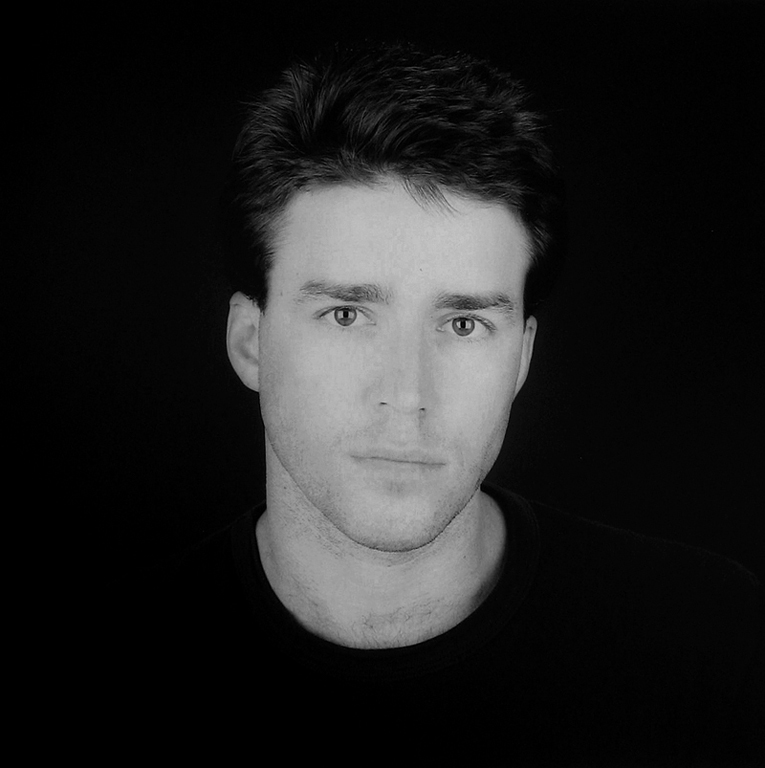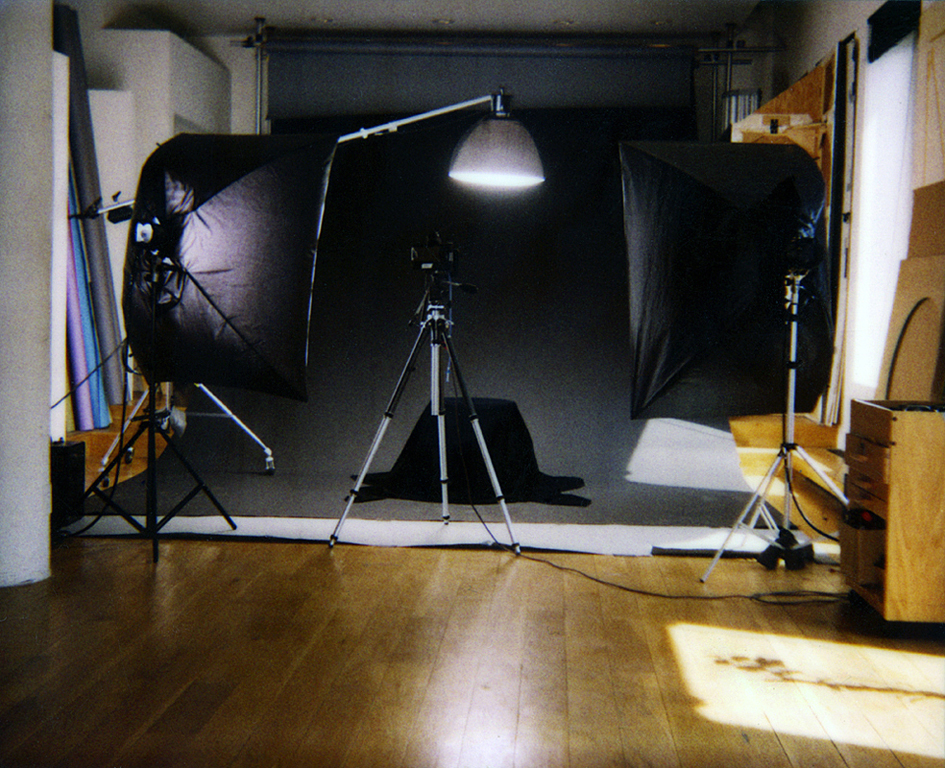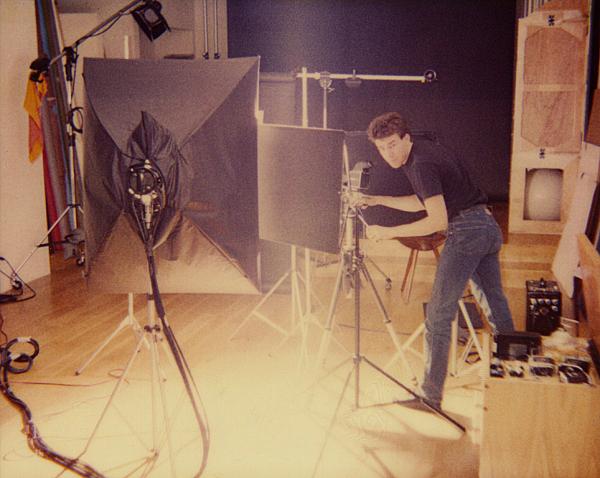For the exhibition Robert Mapplethorpe: The Perfect Medium at LACMA and the Getty Museum, we’ve invited people who knew and worked with the photographer to share their memories of him. Here Brian English, Mapplethorpe’s former (and final) studio assistant, recalls him as boss, artist, and person.
1. Robert, the Boss
Robert Mapplethorpe was a great boss. He hired me as a studio assistant on August 3, 1986, and in one day, I went from being a street kid to an established New Yorker. I was 22 and on my own. I couldn’t afford to pay someone to teach me, but Robert gave me the opportunity to be paid to learn. Although I was unqualified, he saw that I was willing to try hard and could catch on quickly. Not everyone will give you a break like that.
From the beginning, it was the best-paying job that I ever had. We worked in a well-organized, structured environment, had regular hours, and got paid holidays.
Robert was a strong presence to be around, yet he was gentle in his manner, efficient in his actions, and worked quietly. Our efforts as staff were specific to his interests, with a commitment to passion, perfection, quality, and beauty. The work was always interesting and engaging. Whether on the set, in the darkroom, traveling, or just engaged in routine studio activities, I was always learning from him.
Robert was extremely professional, and much to the surprise of others, including my family, the studio was an art business—not a hedonistic den. He respected our differences, and over time, the significance of these differences meant less to me as we got to know each other as people.
As a boss, Robert was strict and demanding but also generous. He gave us gifts: prints on our birthdays, Christmas bonuses, and clothing so we would look good at parties and openings. His giving was not only material. When I was between apartments, he let me stay at the Bond Street studio for a few months. He fell in love with my cat, Amos, who then lived with Robert for about a year.
Most significantly, I once made quite an error in judgment, and Robert forgave me. He could have fired me, which would have ruined me, but he didn't. I was grateful to him. Not only did it change things between us, it changed me. Much of the person I am today, in both life and work, can be traced to Bond and 23rd Streets, and to what I learned working there with Robert, Dimitri, Tom, Suzanne, Eddie, Melodie, Tina, Dina, and Dolcie.



2. Robert, the Artist
When Robert hired me, I was young and knew little, but I loved looking at art and seeing the world through the lens. I had traveled through Asia and Europe in 1984. My camera broke, so I didn’t take many pictures; instead, I looked carefully. In Asia, I experienced the balance and structure of Zen art, and in Europe, I felt the passion and the blood that flows through European art, especially Italian Catholic art. Robert’s work and methods brought these seemingly opposite aesthetics together. I found this combination exciting, as it allowed new connections to be made, along with integrating references to and influences from the past, both near and far. But these connections were happening now, in the present, right in front of my eyes.
At the time, New York felt to me like the sum of all things considered. Robert was a well-known artist in the full swing of his career. It was my responsibility to get up to speed and I did. His techniques, although extremely refined, were not complicated. They had to be executed perfectly, however, as there was little room for error. I learned much from his process.


It was incredible to watch Robert work, especially making portraits. He was completely in control and directed the sitters, as if a puppeteer. He always had a vision and knew how to make it happen; he would stop as soon as he captured the image he envisioned. We had a more directorial relationship with the still lifes. I would set things up to the level of my understanding, and then he would direct me as to what to do next. On some occasions, when I was struggling, he would look at a Polaroid, walk up to the set, and then adjust the camera or object to create the perfect picture. Fortunately, he wanted to shoot every day, so I got to watch him work a lot.

3. Robert, the Person
Although working with Robert could be intense and the reality of his declining health weighed on our minds, it was also lots of fun. There was plenty of hanging out, lively conversation, and goofing off. Robert loved a good pun; he enjoyed making them and would point them out when missed by others. He had a sense of humor, even in his art, which most people overlooked.
Above all else, he was nice. Robert always wanted to know what was going on with us, and he even gave me relationship advice. He was known for saying inquisitively, “So, what else?” He loved to talk on the phone and he loved gossip—reading "Page Six" was a daily routine. As nice as he could be, Robert was also notorious for putting you in your place with a sharp look or a smart, cutting comment. Usually it was deserved, but sometimes not.

At the peak of his career, Robert was having a great time. He felt healthy enough and was enjoying his success and money. Even with his wealth, he still got a kick out of getting a 50-cent hot dog from the corner of 23rd and 5th before the price changed at three o'clock, not because he was cheap, but because he was in many ways still young. Kind of like Patti Smith said, he was just a kid.
But due to AIDS, Robert was getting old fast and dying. He was extremely upset that he was not going to be around to continue making art and having good times with friends. It was extremely sad. One time he apologized to me, saying, “I’m sorry that I’m sick. I used to be much more fun.” I was just his assistant. Can you imagine what it was like for him and those he loved most—his Mom, Patti, Sam, Edward, Jack, Lynn, Dimitri, and many others?
One story in particular says a lot about Robert the person. When Hurricane Gilbert destroyed his housekeeper Dolcie’s mother’s home in Jamaica, Robert gave her the money to rebuild it. At 88, Dolcie still talks about and misses him. While there are many stories about how scary Robert could be, there are more stories about how he was all in all a regular guy, albeit an exceptional artist with a highly sophisticated mind.
I was not Robert’s only assistant; there was Marcus Leatherdale, Javier Gonzales, and, of course, his brother Edward. I have great respect for them, and I wish there could have been other assistants after me to experience what I did. Over time and especially toward the end, I felt that I had truly begun to understand Robert’s art and methods. It is this understanding that I carry with me, along with an admiration, love, appreciation, and sense of honor in having worked with Robert Mapplethorpe.
Co-published with the Getty Iris.



